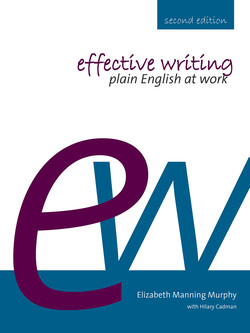Читать книгу Effective Writing - Elizabeth Manning Murphy - Страница 39
На сайте Литреса книга снята с продажи.
4.5 Adverb
ОглавлениеAdverbs modify – that is, they give more information about – a verb, an adjective or another adverb. They can usually be identified easily because of their -ly ending, but not always: for instance, cowardly is an adjective and fast can be an adjective or an adverb.
As with adjectives, adverbs have degrees of comparison, and their comparative and superlative formations are arrived at in much the same way as those of adjectives. The most common formation is to place more and most before the positive form of the adverb. Here are a few examples:
| Positive | Comparative | Superlative |
| quickly | more quickly | most quickly |
| beautifully | more beautifully | most beautifully |
Some adverbs have the same form as adjectives – for example, hard and fast.
This is a hard examination. (adjective)
The team worked hard. (adverb)
Tony owns a fast boat. (adjective)
The ship was stuck fast on the mud. (adverb)
Such adverbs form their comparative and superlative degrees in the same way as the adjectives:
| hard | harder | hardest |
| fast | faster | fastest |
There are irregularly formed adverbs too; for example:
| well | better | best |
| badly | worse | worst |
The following sentences show adverbs being used correctly in various situations:
Maria types quickly, but Anna types more quickly than Maria and Jack types most quickly of all. (adverbs in various degrees modifying the verb types)
This is a very fast train. (very modifies the adjective fast)
The early train travels quite slowly. (quite modifies the adverb slowly)
Her flight arrived early. (early here is an adverb modifying the verb arrived; in the previous sentence early is an adjective modifying the noun train)
